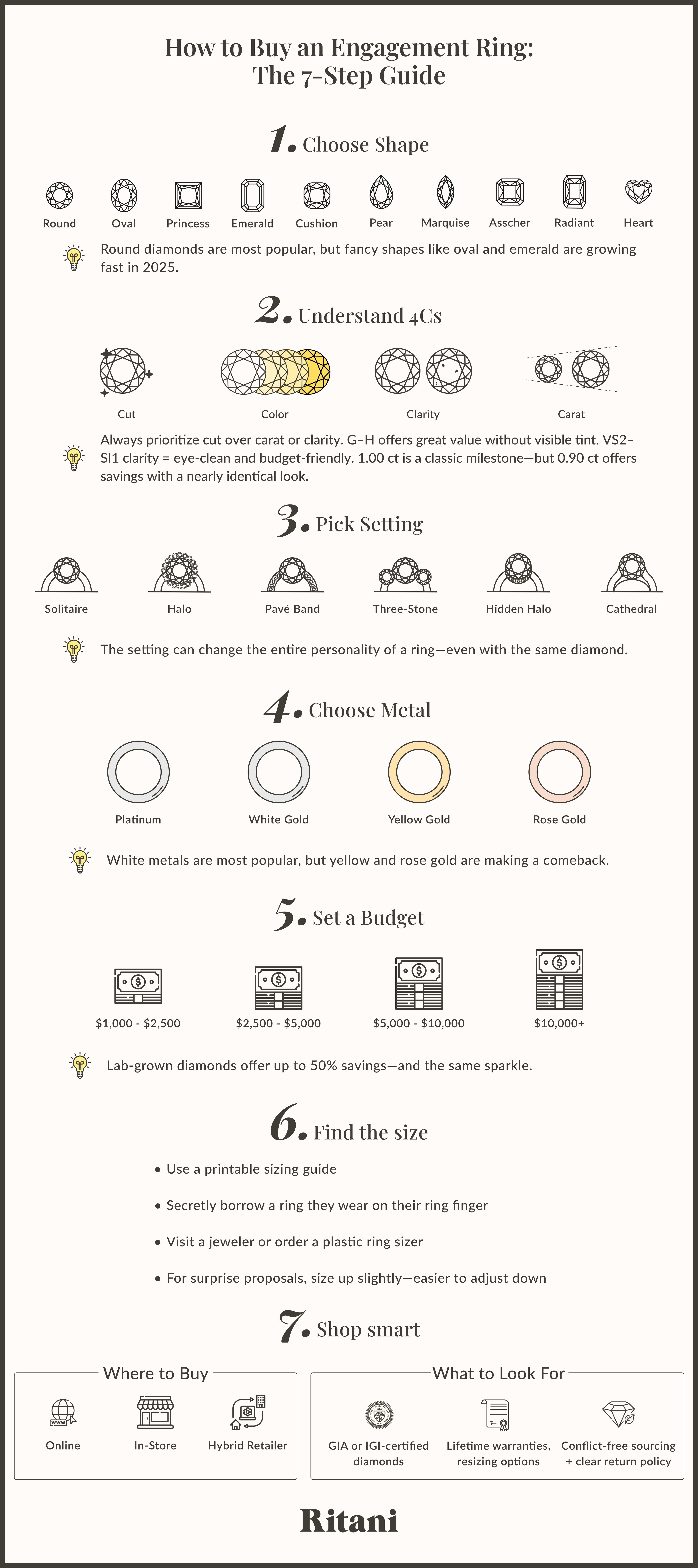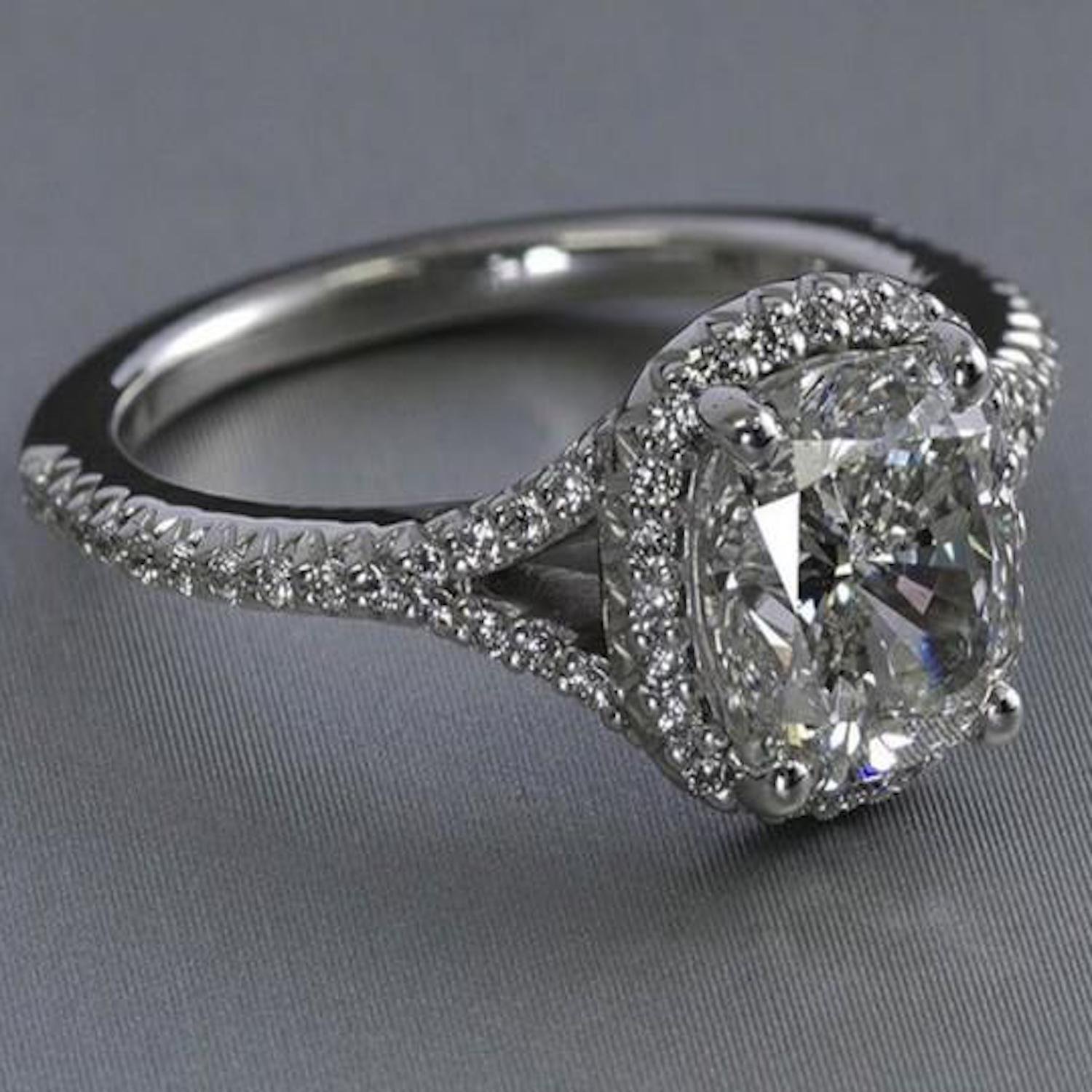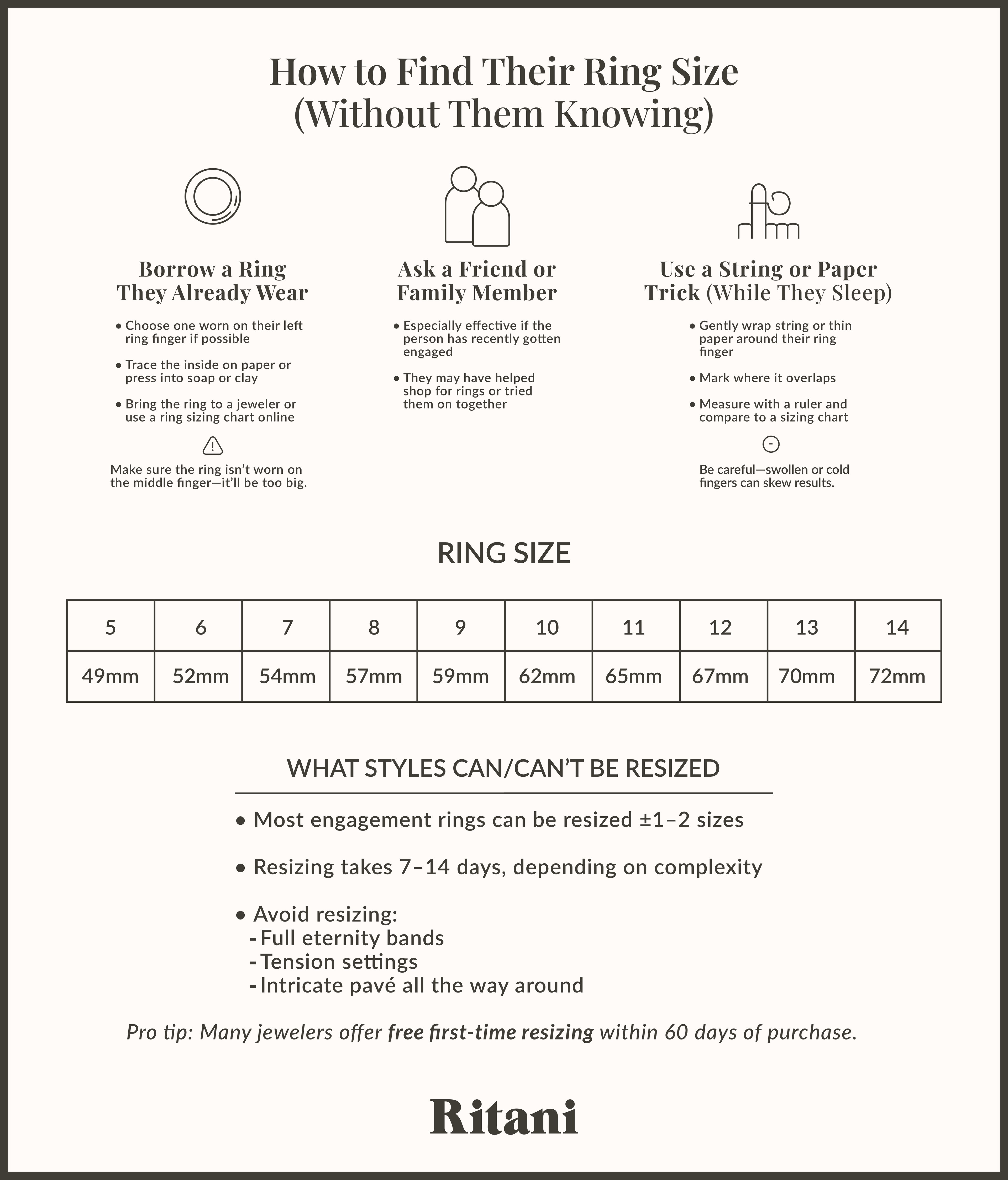The Complete Guide to Buying an Engagement Ring

Buying an engagement ring is one of the most meaningful (and potentially overwhelming) purchases you’ll ever make. Whether you’re planning a surprise proposal or ring shopping together, it’s easy to get lost in a sea of diamonds, settings, and prices. This complete guide walks you through everything you need to know about buying an engagement ring—from choosing the right shape and diamond quality to setting a budget and finding the perfect fit.
What Makes an Engagement Ring?
At its core, an engagement ring includes:
- Center stone (diamond or gemstone)
- Setting (how the stone is held)
- Band (metal choice like gold or platinum)
The most popular choice is a diamond solitaire, but endless options exist to match personal style, lifestyle, and values.
Step 1: Choose Your Diamond Shape
Shapes and why it is popular:
- Round - classic brilliance, timeless appeal
- Oval - elongates the finger, trendy but elegant
- Princess - modern sparkle with clean angles
- Emerald - vintage-inspired, understated glam
- Cushion - soft edges, romantic and versatile
- Pear - unique and flattering, a bold choice
- Marquise - regal and elongating, very distinctive
- Asscher - vintage charm, art deco allure
- Radiant - bold sparkle, modern elegance
- Heart - romantic beauty, enduring emotion
Round diamonds are most popular, but fancy shapes like oval and emerald are growing fast in 2025.
Step 2: Understand the 4Cs of Diamond Quality
1. Cut
- Affects sparkle the most
- Grades: Excellent, Very Good, Good, etc.
- Always prioritize cut over carat or clarity
2. Color
- D (colorless) to Z (noticeable yellow/brown)
- G–H offers great value without visible tint
3. Clarity
- Ranges from Flawless to I1 (inclusions visible)
- VS2–SI1 clarity = eye-clean and budget-friendly
4. Carat
- Refers to weight, not size
- 1.00 ct is a classic milestone—but 0.90 ct offers savings with a nearly identical look
Step 3: Pick the Perfect Setting
| Setting Type | Description | Best For |
| Solitaire | Clean and classic, single center stone | Minimalists, timeless taste |
| Halo | Smaller stones surround center stone | Maximum sparkle, glam styles |
| Pavé Band | Small stones along the band | Romantic, dainty look |
| Three-Stone | One center + two side stones | Symbolic, storytelling design |
| Hidden Halo | Sparkle tucked under the center | Subtle detail, modern elegance |
| Cathedral | Raised arches elevate the diamond | Traditional, vintage lovers |
The setting can change the entire personality of a ring—even with the same diamond.
Step 4: Choose Your Metal
| Metal Type | Tone | Notes |
| Platinum | Bright white | Most durable, hypoallergenic, premium |
| White Gold | Cool white tone | Rhodium-plated, modern and bright |
| Yellow Gold | Warm gold hue | Vintage feel, great for warmer skin tones |
| Rose Gold | Blush pink | Romantic, trend-forward |
White metals are most popular, but yellow and rose gold are making a comeback.
Step 5: Set a Realistic Budget
| Budget | What You Can Expect |
| $1,000–$2,500 | Lab-grown solitaire, pavé band, 0.50–1.00 ct |
| $2,500–$5,000 | Natural 1.00 ct solitaire, lab-grown halo |
| $5,000–$10,000 | Natural 1.25–2.00 ct, designer settings |
| $10,000+ | Custom designs, premium carat + clarity |
Lab-grown diamonds offer up to 50% savings—and the same sparkle.
Step 6: Get the Ring Size Right
- Use a printable sizing guide
- Secretly borrow a ring they wear on their ring finger
- Visit a jeweler or order a plastic ring sizer
- For surprise proposals, size up slightly—easier to adjust down
Step 7: Shop Smart
Where to Buy:
- Online: Transparent pricing, bigger selection, lab/natural options
- In-Store: Try on in person, consult with experts
- Hybrid retailers (like Ritani): Best of both worlds
What to Look For:
- GIA or IGI-certified diamonds
- Lifetime warranties, resizing options
- Conflict-free sourcing + clear return policy
Common Engagement Ring FAQs
- How long before the proposal should I buy the ring?
At least 4–6 weeks ahead (especially for custom or made-to-order pieces).
- Are lab-grown diamonds real?
Yes identical in structure to natural diamonds, just grown above ground.
- Can I upgrade or reset a ring later?
Most retailers offer upgrade policies or redesign services.
Buying an engagement ring is a deeply personal journey—but with the right knowledge, it becomes less overwhelming and more empowering. Whether you're going classic or modern, natural or lab-grown, what matters most is that the ring reflects your love story—and lasts just as long. Watch the video below to learn how to shop for an engagement ring with confidence.


